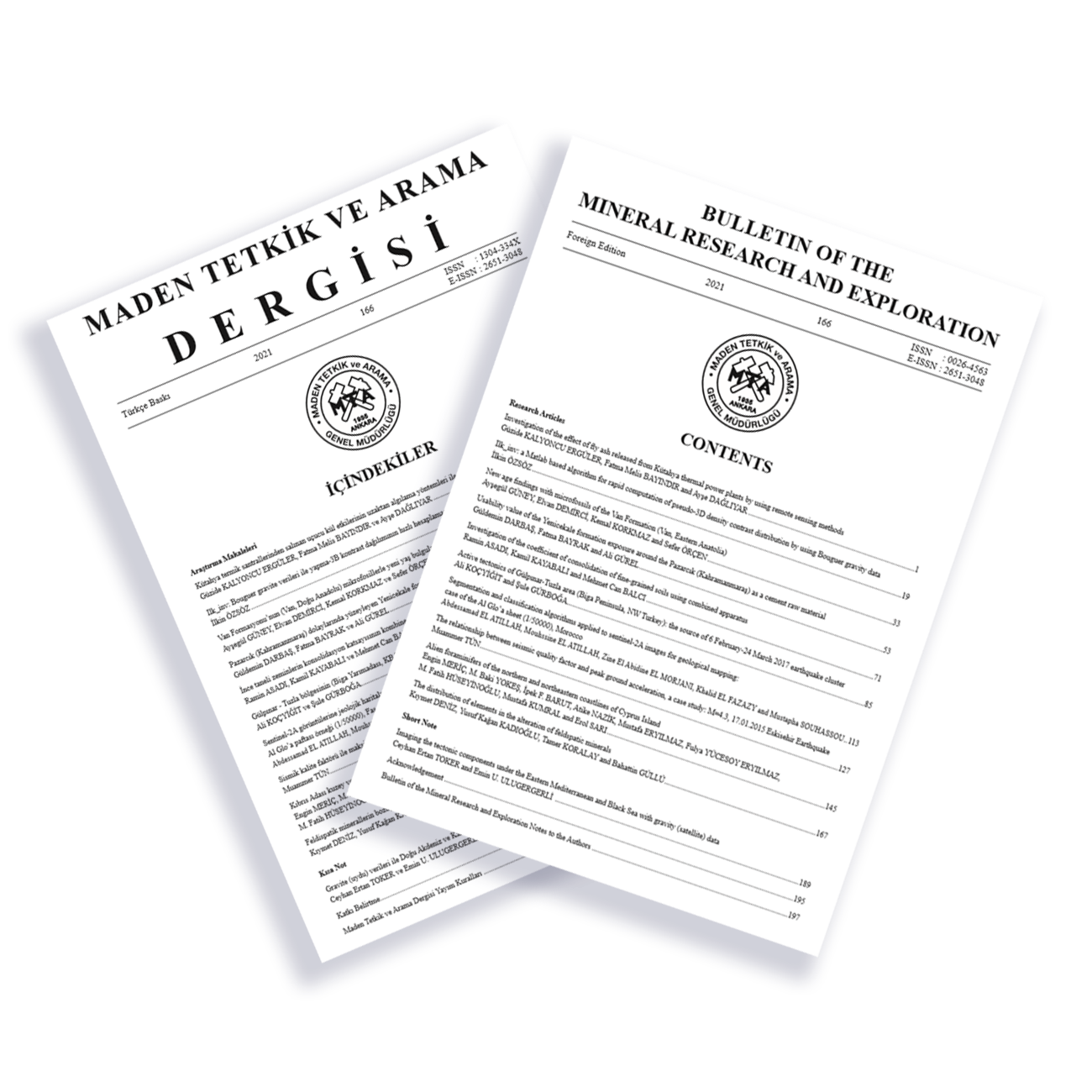Details
Porphyry and epithermal Au-Cu systems of the Southern Caucasus and Northern Iran
Güney Kafkasya ve Kuzey İran’da porfiri ve epitermal altın-bakır sistemleri
Indexed In
Volume 174 / August 2024Authors
Alexander G. TVALCHRELIDZEKeywords
Epithermal, Porphyry, Gold, Copper, Paleothermal Field.Abstract
This article presents tangible geological evidence for the coexistence of porphyry copper and epithermal gold systems within single polygenic deposits and provides a paleothermophysical model for their origins. A brief metallogenic analysis of the Southern Caucasus and Northern Iran has shown that such deposits are confined to long-living calc-alkaline island arcs and were formed during their orogenesis. Examples of complex Sonajil (Iran), Gharta, and Merisi (Georgia) deposits are considered. The investigation has shown that for combined porphyry and epithermal ore formation, some preconditions are suggested to exist: (i) a source of anomalous energy that exceeds the thermodynamics of the enclosing environment; (ii) the existence of a temperature gradient that determines conventional flows of fluids composed of endogenous and meteoric constituents (proven by rhythmical zoning of ore lodes); (iii) the stability of such conditions for a period of sulfide ore formation. However, such a process of sulfide ore formation cannot explain the formation of high sulfidation gold deposits. The precipitation of native gold requires phreatic collapse in the ore conduit channel, already after the formation of hydrothermally altered rocks, and this event results in the creation of either hydrothermal breccias often with jigsaw-fit texture or brecciated vuggy silica where host rocks and hydrothermally altered rocks are cemented by a gold-bearing quartz matrix.
Click for .pdf Türkçe .pdf için tıklayınız
